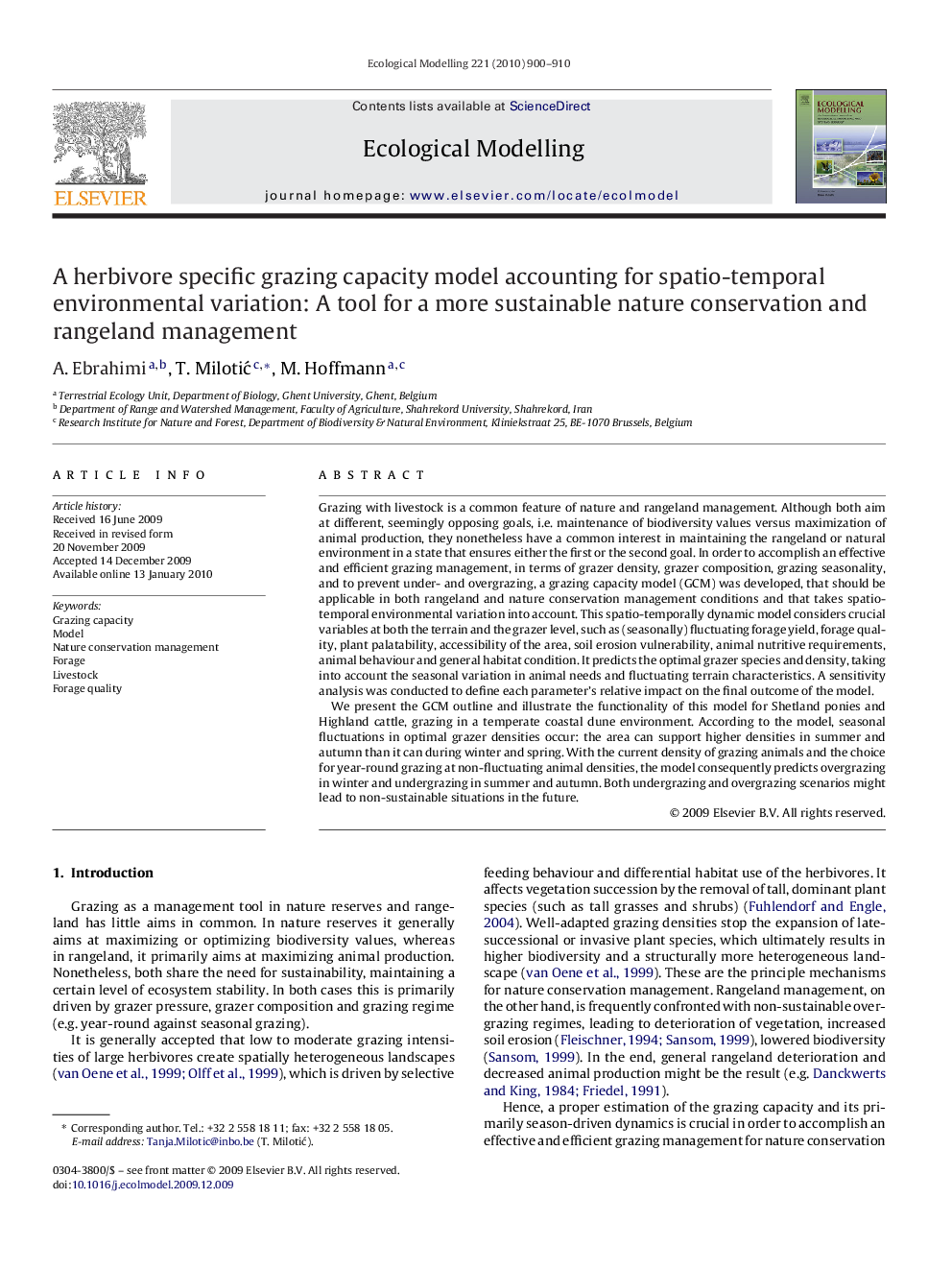| Article ID | Journal | Published Year | Pages | File Type |
|---|---|---|---|---|
| 4377425 | Ecological Modelling | 2010 | 11 Pages |
Grazing with livestock is a common feature of nature and rangeland management. Although both aim at different, seemingly opposing goals, i.e. maintenance of biodiversity values versus maximization of animal production, they nonetheless have a common interest in maintaining the rangeland or natural environment in a state that ensures either the first or the second goal. In order to accomplish an effective and efficient grazing management, in terms of grazer density, grazer composition, grazing seasonality, and to prevent under- and overgrazing, a grazing capacity model (GCM) was developed, that should be applicable in both rangeland and nature conservation management conditions and that takes spatio-temporal environmental variation into account. This spatio-temporally dynamic model considers crucial variables at both the terrain and the grazer level, such as (seasonally) fluctuating forage yield, forage quality, plant palatability, accessibility of the area, soil erosion vulnerability, animal nutritive requirements, animal behaviour and general habitat condition. It predicts the optimal grazer species and density, taking into account the seasonal variation in animal needs and fluctuating terrain characteristics. A sensitivity analysis was conducted to define each parameter's relative impact on the final outcome of the model.We present the GCM outline and illustrate the functionality of this model for Shetland ponies and Highland cattle, grazing in a temperate coastal dune environment. According to the model, seasonal fluctuations in optimal grazer densities occur: the area can support higher densities in summer and autumn than it can during winter and spring. With the current density of grazing animals and the choice for year-round grazing at non-fluctuating animal densities, the model consequently predicts overgrazing in winter and undergrazing in summer and autumn. Both undergrazing and overgrazing scenarios might lead to non-sustainable situations in the future.
